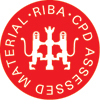This programme will present key research on the impact of energy efficiency strategies - such as the installation of insulation, draught-proofing and boiler upgrades - in low-income houses. It especially focuses on the health benefits of these improvements for elderly and infirm occupants and those generally regarded to be in fuel poverty.
It looks at some of the pros and cons of thermal improvements; for example, the average temperature of well-insulated homes actually rises compared to that before remedial insulation - a slight increase in energy use – due to a number of psychological and practical factors discussed here.
Key learning points:
- The nature of fuel poverty
- An explanation of ASHRAE (American Society of Heating, Refrigerating, and Air-Conditioning Engineers) and some of its research standards
- A clarification of definitions like PMV - the predicted mean vote - when understanding the average response of thermal comfort, is not ALL respondents agree on thermal comfort
- The meaning of neutral temperature
- The determinants and variants of thermal comfort
- Energy efficiency low hanging fruit.
About the contributors
Dr Sung-Hugh Hong, chief researcher in Energy Efficient Refurbishment in Low-income Dwellings. His expertise is in the development of a computer-based energy and environment simulation model to find environmental strategies to reduce building energy use. In 2012, Sung provided consultancy service to the Korean Olympic Committee to resolve fogging and thermal comfort issues in its main ice skating rink.
 Disclaimer: NBS TV programmes are the intellectual property of RIBA Enterprises and it shall be a breach of this right to copy, or in any way exploit commercially or show in public any of the programmes without the express permission of RIBA Enterprises.
Disclaimer: NBS TV programmes are the intellectual property of RIBA Enterprises and it shall be a breach of this right to copy, or in any way exploit commercially or show in public any of the programmes without the express permission of RIBA Enterprises.
